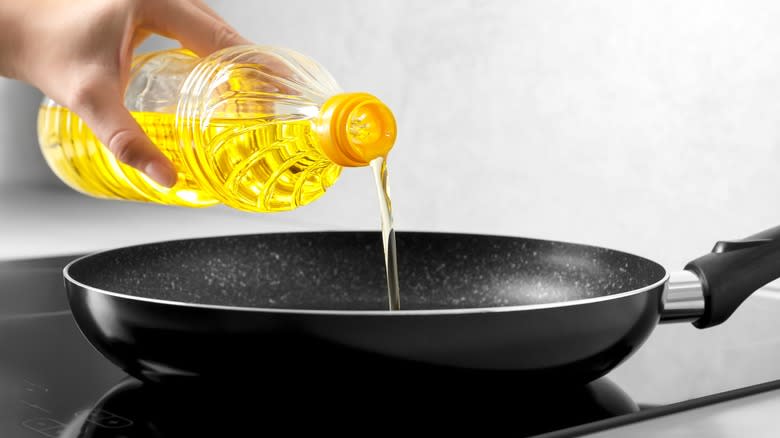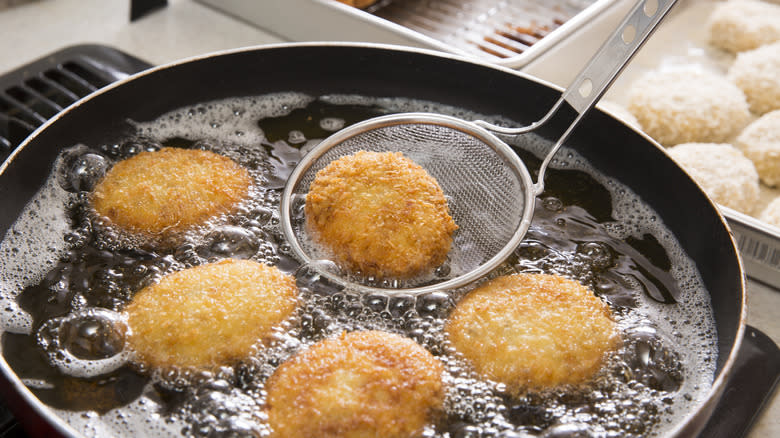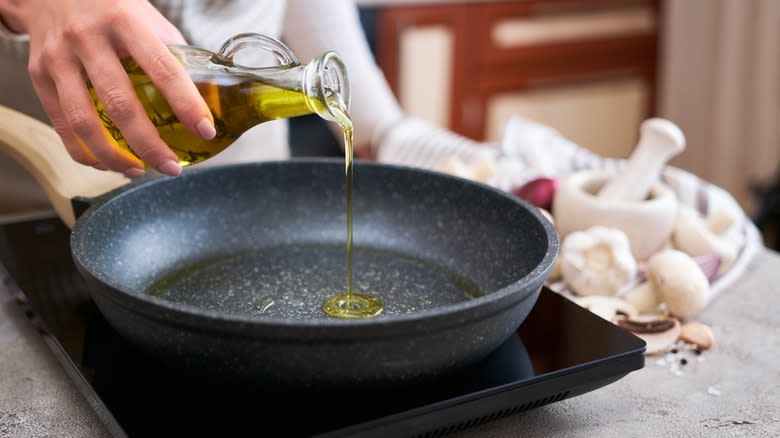Is Your Fry Oil Too Hot? There's A Simple Hack To Fix It Right Up

It's hard to argue that most foods taste just a little better when they're deep-fried. Deep frying at home is easy, but there are some techniques to use to make sure your oil doesn't burn -- and also to keep you safe. If you don't own a deep fryer, then you'll have to regulate the oil's temperature on your own, which can be a little tricky if you look away for a minute. But if you find yourself in a situation where your oil has become way too hot, there is one simple fix: add more oil.
Balancing too-hot oil with room-temperature oil will help bring the temperature down. Just use an oil thermometer to keep track of the changing temperature while adding the new oil; this ensures the oil temperature doesn't drop too low. If you're out of that type of oil you're using, then you technically can mix another oil in there, but make sure it's an oil with a similar smoke point.
Read more: French Cooking Tricks You Need In Your Life
Bring Down Your Oil's Temperature With More Oil

It's a pretty simple fix, really. Room temperature oil does wonders for lowering the oil's overall temperature -- just be careful not to put too much oil in the pot and overflow it. And when you do get it to that desired temperature, keep the heat low to prevent it from getting too hot once more.
But what if you've run out of that specific oil? In most cases, you can mix oils, but you have to be careful about smoke points. If you're frying with canola oil and all you have left in the pantry is vegetable, then you'll be fine; both have smoke points around 400 degrees Fahrenheit. But if you're frying with peanut oil and only have olive oil in the pantry, it's a no-go. Peanut oil has a smoke point more than 100 degrees higher than olive oil, meaning that combining the two creates a fire hazard. Always double-check oil smoke points before mixing, and try to blend only neutral-flavored oils like vegetable, canola, and corn oil -- corn oil is also one of the best oils for deep frying.
How To Test Oil Temperature Without A Thermometer

If you're deep frying food at home and don't have a thermometer for measuring the oil temperature, there are a few tricks that will help you to know whether the oil is not hot enough or even too hot. It's all about the bubbles; test the oil by tossing a little bit of flour, or even a small piece of bread, into the oil. If it bubbles nicely, the oil is the perfect temperature for frying. But if it doesn't bubble at all, the oil isn't ready yet, and if the bubbles start going crazy, then the oil is too hot. You can also use a wooden spoon; bubbles will form around the oil if it's ready to go.
When heating the oil over the stove without a thermometer, set the stove to no higher than medium-low. This ensures that the oil won't heat too quickly, giving you time to test it every few minutes to know when it's the right temperature. And make sure you know your oil's smoke point, which will help avoid overheating.
Read the original article on Daily Meal.

